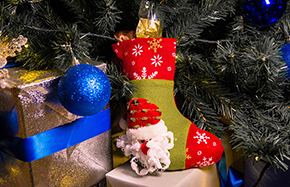Great taste of liquid amber

The rich hues of shaoxing wine make it easily recognizable, from the very light gold to a deep chocolate brown.
This is also the wine most often used as the Chinese equivalent to the ubiquitous cooking sherry. Some recipes actually suggest sherry and shaoxing be interchangeable, but they are really worlds apart.
Shaoxing is most typical of the huangjiu, the yellow liquor from southern China. It is fermented from rice or glutinous rice, and not distilled. In some cases, the finished wine is further distilled to concentrate the flavor and increase potency.
Usually, however, shaoxing is just aged in vats. The vintage of the wine determines its type, and the vessel may determine the name - as in huadiao - named for the ornately decorated bottle it is sold in.
Another type of shaoxing is jiafan (added rice), which is self-explanatory. Rice is mixed into the fermenting wine for the starch in the cereal to work its magic.
The generic name itself comes from Shaoxing in Zhejiang province, a famous water-town where the liquor has been produced for thousands of years, right back to the time of the Zhou Dynasty (c.11th century-256 BC).
The best vintages were reserved for tribute. After the Ming era when the Grand Canal was finished, the tribute ships went north to Beijing each year.
Even now, state banquets in the Forbidden City still serve shaoxing.
Unlike the distilled white spirits common in the north, shaoxing is more mellow, and gets even more so with aging. The best shaoxing is butter smooth and should not give you a hangover, although it may punch a hole in your wallet - which is a very different type of pain.
The wine is sweet, but not cloying, and in the best vintages the sugar on the tongue mellows to just the merest hint. It does not have the sharp hit of white spirits on nose and guts, but possesses a deceiving subtlety that may catch the novice unawares.
Shaoxing is drunk warmed, although in Taiwan where it is vastly popular, they have concocted ways to drink it cold, mixed with pickled sour plums that make it easy to go down the gullet, and come up just as easily overnight if indulged in excess.
The first time I ever got drunk was on a lethal shaoxing cocktail that was a sort of Chinese version of the Long Island Iced Tea. My memories of the aftereffects were distinctly hazy, with vague recollections of hugging a cold lamppost and being in a darkened hotel room for 48 hours. I am pretty sure the cocktail was also returned in spectacular ways that I have thankfully forgotten.
Other memories of more mature encounters come with the hairy-crab season, when little warmed bottles drunk in tiny civilized portions washed down the feast. In Chinese cuisine, crab is considered a cooling food and the warmed wine does the necessary countering to keep yin and yang balanced. Of course, it also aids the festive spirit.
When choosing a bottle of shaoxing, price is the best guide. Supermarkets will have the most amazingly affordable bottles at less than 10 yuan ($1.5), but remember that these are best splashed into the wok for stir-fries.
Head for the dedicated shelves housing Chinese spirits and buy a bottle that is prettily presented. The serious shaoxing drinkers dispense with the packaging. We get our shaoxing from suppliers that draw our liters from huge brown ceramic vats varnished with age and pickled by the liquor it holds.
At home, you can decant the liquid amber into your best crystal bottle. It deserves as much.
















